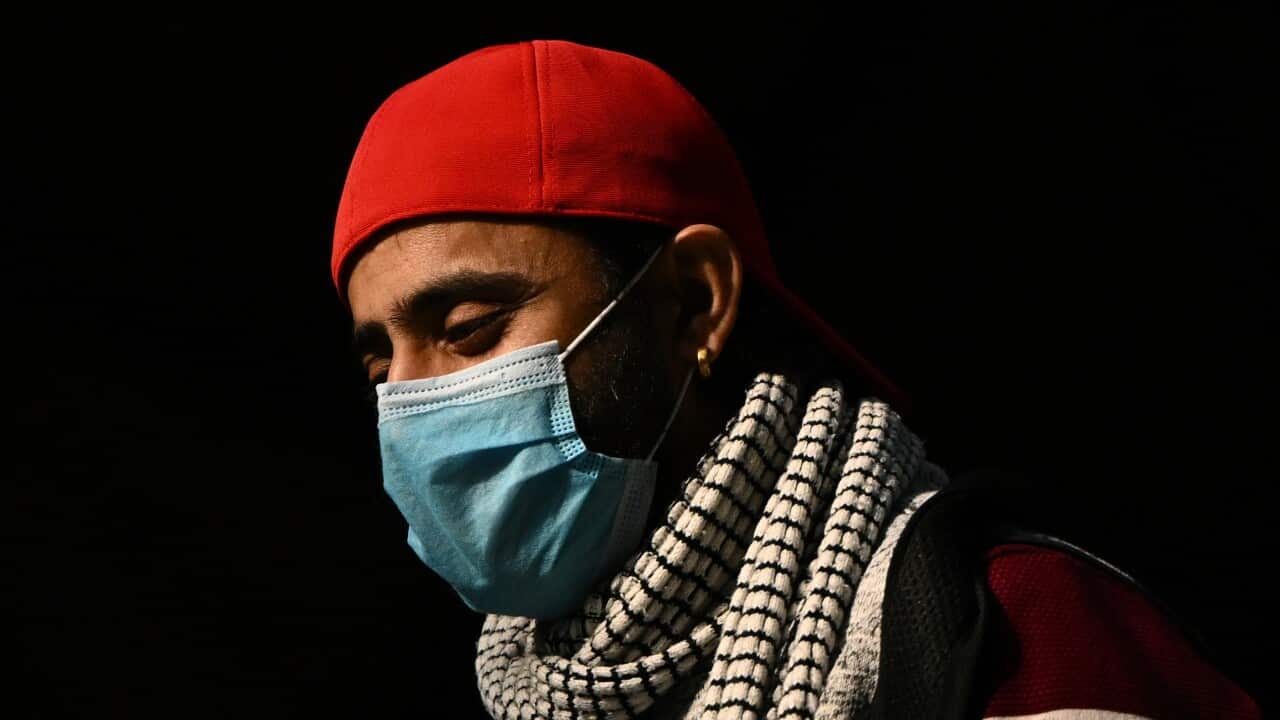Australia is in the midst of a new COVID-19 wave, with significant increases in case numbers recorded across the country in the past week.
New cases have jumped by 63 per cent in Victoria from 10,226 to 16,636, while weekly infections in NSW have risen by more than 7,000 to 19,800.
Hospitalisations are increasing as well, with the number of patients being treated in Queensland doubling in just seven days.
What's driving the new wave?
While we're typically told to expect large spikes in COVID-19 cases over winter, this new wave is hitting Australia in spring.
Professor Adrian Esterman, chair of biostatistics and epidemiology at the University of South Australia, said that's because there are three big things happening at the same time.
The first is that many people in Australia have waning immunity from vaccination and previous infection.
"It's now seven months since my last dose, and that means that by now I have a much-reduced protection against COVID-19, and that includes serious illness and death," Professor Esterman told SBS News.
"So although I'll still have some protection, it’s nowhere near as strong as it was seven months ago, and many people are in that situation."

Credit: SBS
"They've really taken over in places like Singapore and France, and they're starting to take over here," Professor Esterman said.
"[The subvariants] are much more transmissible than BA.5, they're much better at evading our immunity, and they would alone cause an increase in cases, never mind waning immunity."
The final thing in the mix is the removal of public health measures, such as mandatory isolation and mask-wearing in indoor settings.
"We've taken off all our brakes to reduce transmission, we have nothing left," Professor Esterman said.
"That means that if any new variant comes along that we don't have immunity against, it will just go straight through the population."

Credit: SBS
How serious is it?
Professor Catherine Bennett, chair in epidemiology at Victoria's Deakin University, said the new subvariants are similar to ones we've seen before.
"Thankfully, they don't cause more severe illness," she tolds SBS News.
"But we know from our own experience that higher infection rates can mean more people end up in hospital."
Professor Esterman said some experts believe that this new wave may not go on for as long or be as severe as the previous ones.
"The reason why people are saying this is because we've seen similar waves starting in Singapore and in France, and they were fairly short-lived and not as high as BA.5," he said.
"But there is no guarantee that the same thing would happen here."
Severe illness, death and ongoing health problems such as long COVID are still a possibility for everyone, Professor Esterman added.
What are authorities doing?
Queensland on Thursday from green to amber, telling residents to be alert but not alarmed.
Along with the colour change came advice for Queenslanders to wear face masks on public transport and in healthcare settings.
Despite a significant uptick in case numbers in all Australian jurisdictions, no other states or territory governments have so far moved to change their advice.
What can individuals do to have a COVID-safe summer?
The latest data shows 72.2 per cent of eligible people in Australia have received , while just 42.1 per cent of those aged 30 and over have had a fourth.
Professor Bennett said being up-to-date with boosters is "really important", especially with more virus circulating in the community.
"That will help younger adults at least go through some period where they might have reduced risk of infection, and that might help us keep this wave down," she said.
"But they're particularly important for those people who are vulnerable to serious illness because the booster can make a big difference - it can keep you out of hospital."
The only group for which a fifth dose is currently recommended are severely immunocompromised people aged 16 years or older. Professor Esterman said he thinks the fifth dose will be made available to in the next two to three months.
Expert advice for other measures to reduce your risk remains the same: wear masks indoors, socially distance where possible, practice good hand hygiene, and test and stay at home when you're sick.
"All those things matter, but they matter that bit more as our infection risk goes up in the community," Professor Bennett said.
"What we do now over the next few weeks, could in fact make a big difference for how we experience our summer break.
"You may not be able to wear a mask all the time, but the times you wear it you're reducing your exposure risk, and if they're high-risk settings, indoor settings with people you don't normally mix with, then that's the time to put them on because that will keep you from having to isolate yourself at Christmas time."
Will the health system be able to withstand the new wave?
Whether hospitals and the wider healthcare system can cope with the new wave will depend on its length and severity, Professor Esterman said.
"If this particular wave that’s starting now is shorter and less high than the previous wave, then our hospitals and health systems can probably cope," he said.
"If it's as bad or worse than BA.5, then we might be struggling."
Professor Bennett said if those most at risk from serious illness take antivirals as soon as they get sick, not only will it increase the likelihood of them being able to recover at home, it will also ease the strain on hospitals.
"If we can try and do everything that we can, at the individual level, to minimise the risk of people becoming seriously ill, then that will help."










